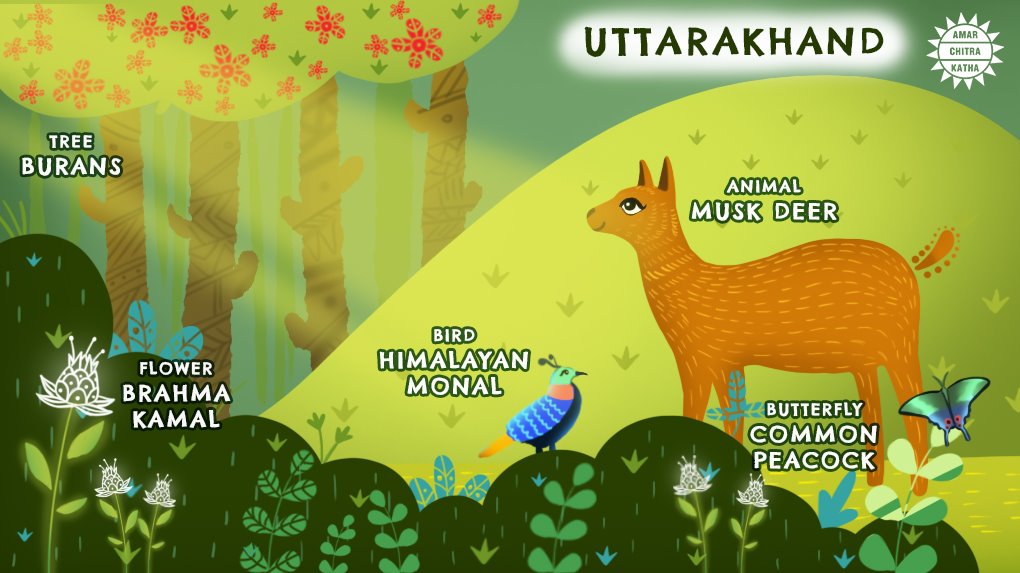The Story Of Uttarakhand
- February 8, 2021


The Story Of Uttarakhand
- February 8, 2021
Crowned with snow-capped peaks, dotted with beautiful valleys, the birthplace of many rivers and with numerous places of pilgrimage, Uttarakhand is justifiably called the abode of the gods or Devabhumi. This Indian state is located in the north-western part of the country. It has a long and ancient history.
The archaeological remains like ancient rock paintings, rock shelters and stone tools show that the region has been inhabited since prehistoric times. It also finds a mention in many Vedic texts. The tribes that inhabited the Garhwal and Kumaon region, which make the present Uttarakhand, are mentioned in many other early scriptures. It is believed that the sage Veda Vyasa wrote the epic Mahabharata in this mountainous state. Among the early tribes, the Paharis were the only people in Garhwal and Kumaon regions until the arrival of the Rajputs around the 13th century.

The Kunindas and the Katyuris were among the major dynasties ruling this area followed by the Chands. In 1803, with the invasion of the Gorkhas, the Nepalese invaders, the course of succession in these mountains changed. The Gorkha forces first captured Kumaon and then attacked Garhwal. In the battle of Khurbara in 1804, King Pradyumna Shah was defeated and killed. The Gorkhas now became the rulers of most of the regions of both Kumaon and Garhwal. In 1815, the Gorkha rule ended when the British crushed them in battle, and threw them out of Uttarakhand.
To receive more such stories in your Inbox & WhatsApp, Please share your Email and Mobile number.
Garhwal and Kumaon regions were joined during the British rule and made a part of the Avadh province in 1856. The British used a different mode of governance for the hilly regions of this province. They set up a small administrative unit known as Patwari Halka for efficient governing. The Patwari was equipped with the power of a tax collector and also of the police. English was also introduced in this region. Tehri was formed in 1815 and became the capital of Garhwal in British India.
The people of Kumaon and Garhwal, along with its soldiers played a vital role in the Indian freedom struggle. The Indian Army has two regiments from this state, namely the Garhwal Regiment and the Kumaon Regiment. These regiments have numerous battle honours and citations to their credit and have contributed bravely in wars in both pre and post-independence times.

After independence, this region was added to the state of Uttar Pradesh. Due to the differences in the overall culture and lifestyle of the people of the hills and those from the rest of the state, the demand for separate statehood started gaining momentum.
Finally, in November 2000 with a reorganisation of states, Uttaranchal (meaning northern mountain) was created as the 27th state of India. In 2007 Uttaranchal was renamed Uttarakhand.
To receive more such stories in your Inbox & WhatsApp, Please share your Email and Mobile number.

Comic of The Month
The Naval Journey of India Book I
This book is the first of a three-book series that takes a deep and detailed look at India's Naval History and a deep insight into the lives of our men and women in white. But any series on the Indian Navy has to start at the very beginning - exploring India's celebrated maritime history. Join our little hero, Bharat, and his grandfather, Commodore Sagar, as they sail into the deep blue waters of time. Book I of The Naval Journey of India takes a sweeping look at India's maritime endeavours, how the seas impacted us over millennia and how the oceans made us who we are.